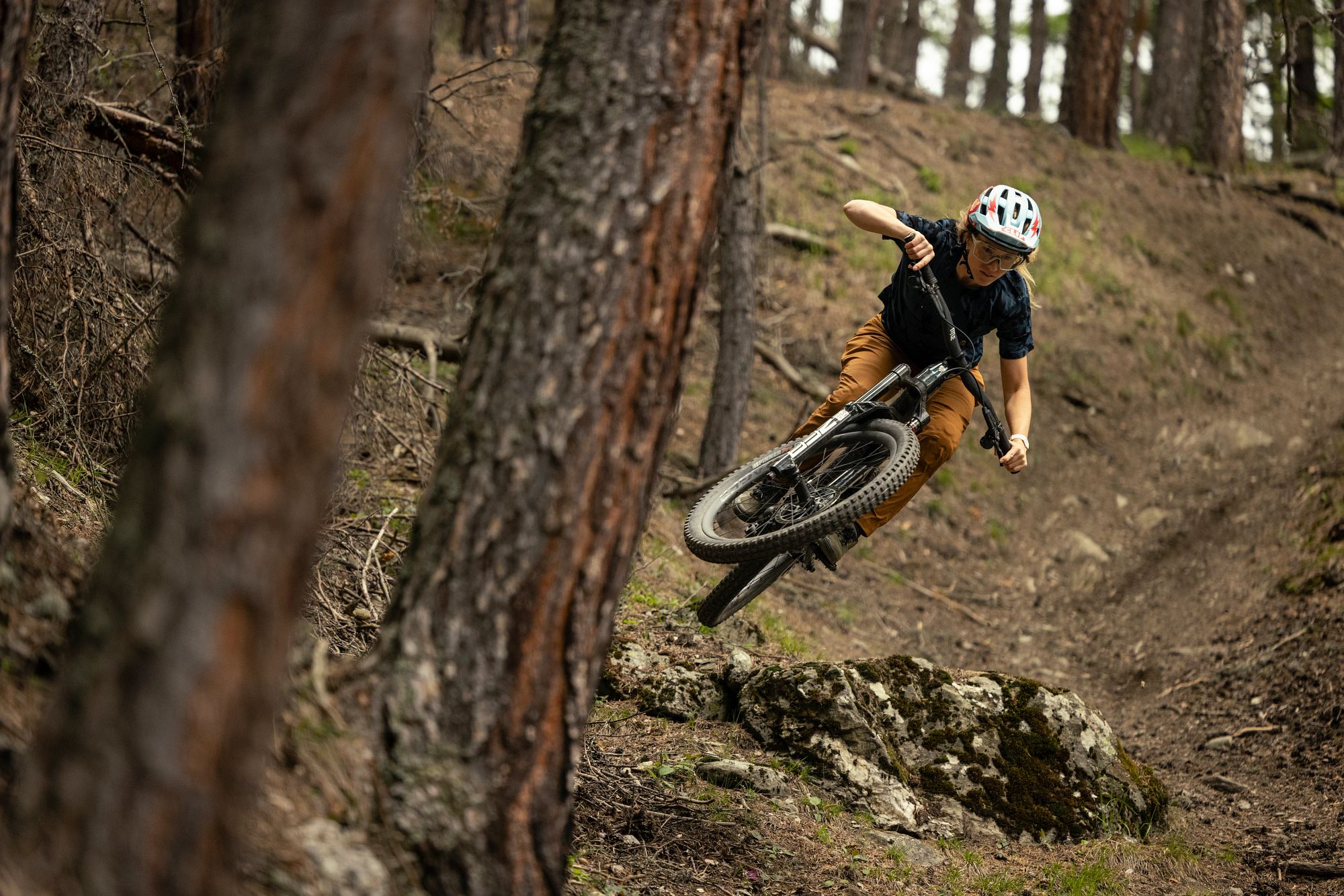
Slash is one of those bikes that just gets people excited. It’s a hell of a lot of bike, with long travel front and rear and the kind of aggressive geometry you’d expect from a big brand’s flagship enduro range.
Well, Trek have gone and made Slash even more of a monster with the Gen 6: there’s more travel, slacker geometry and a heap of adjustability features that enable you to play with the wheel set-up, the head angle and more.
Here’s the lowdown on this burly beast of a bike.
The Gen 6 Slash is more capable of charging over rough stuff with high-pivot suspension that better absorbs impacts from rough terrain, rocks, roots and drops because the rear wheel path travels in a way that allows it to move up and over obstacles more easily. You’ll also notice the idler pulleys next to the pivot and the crank which soak up pedal kickback. It’s all about delivering a smoother ride over gnarly terrain. The other headlines are the mullet set-up as standard - which can be switched to full 29er if you like - and some big claims on pedalling efficiency from Trek.
Slash is an out-and-out enduro bike, so if that’s your thing this is right up your street. It’ll roll over and soak up almost anything you can throw at it but it’s great on the way back up the hills too. It’s also a good pick for trail riders who want plush suspension. It’s a lot of fun in the bike park too.
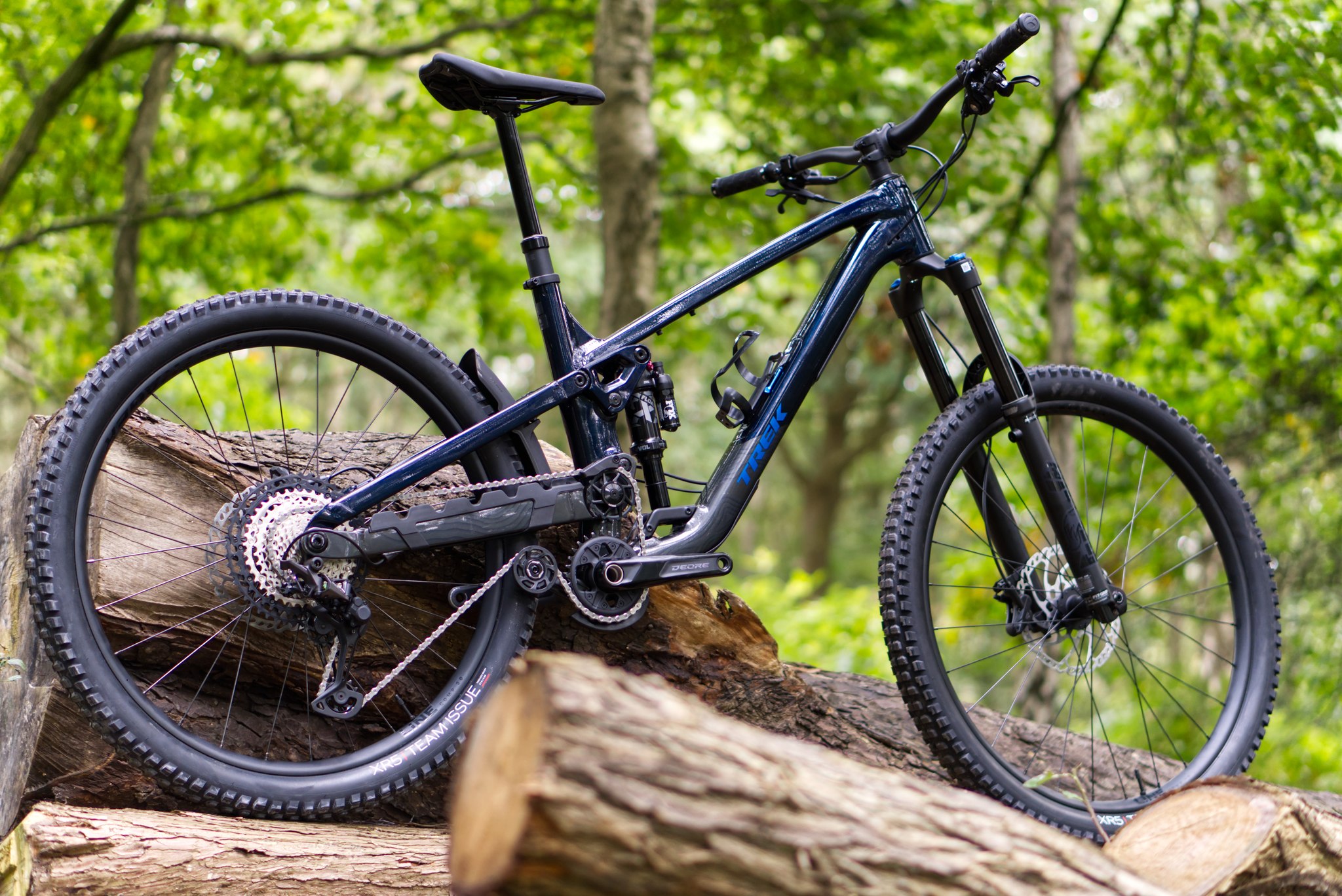
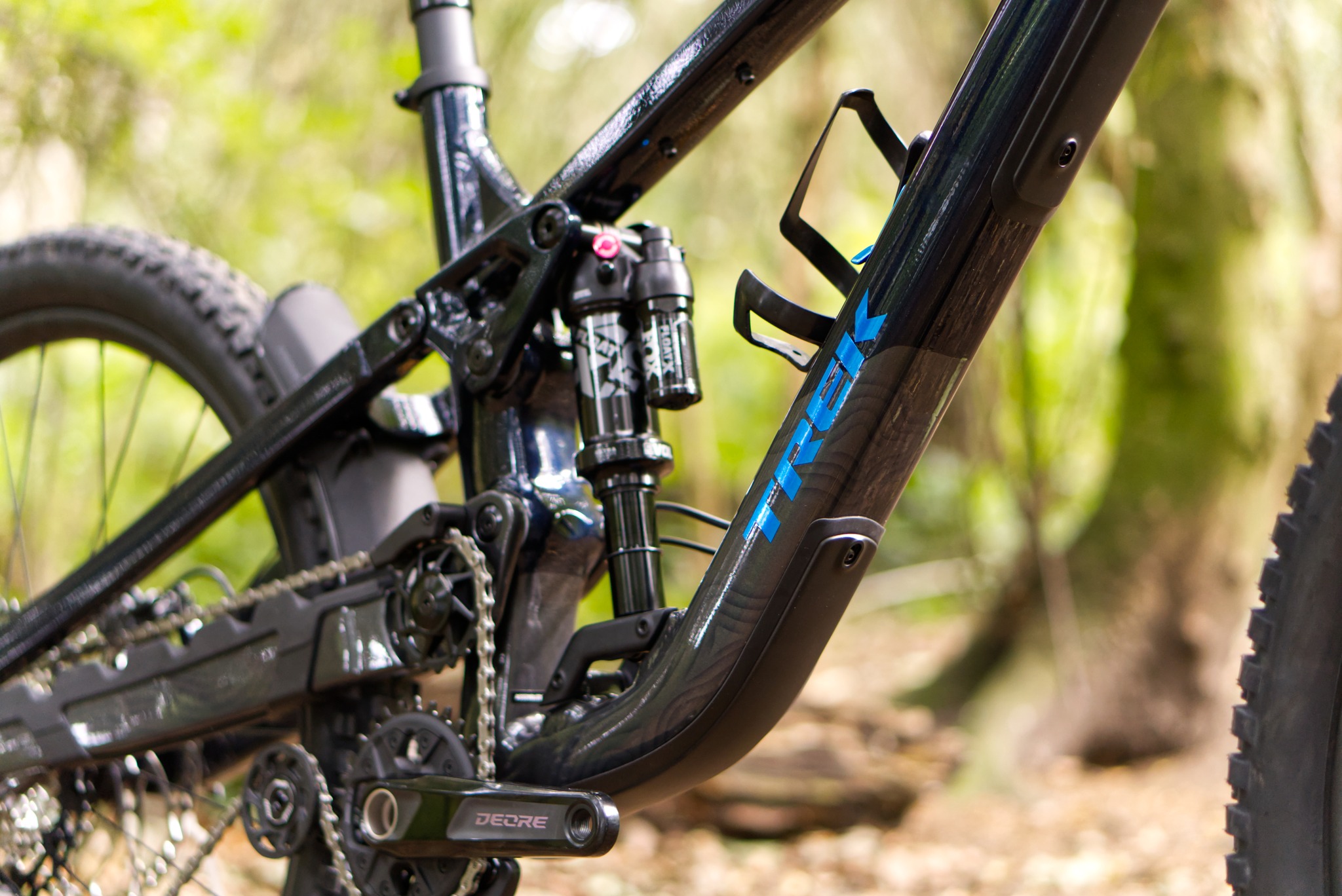
Here are the key specs for the Slash 8 shown above.
High-pivot suspension is a key feature of Trek’s downhill Session range and has now been introduced to Slash. This allows the rear suspension to travel slightly rearward, as well as up, when it hits an obstacle, and really comes into its own when coming into contact with bigger, more square-shaped rocks and roots.
This video from Trek explains it well.
There’s a lot going on around the crank and main pivot but the idler pulleys are there for good reason; to maintain consistent pedalling efficiency and reduce chain growth during suspension compression. Because the rearward axle path increases the distance between cranks and cogs, the chain pulls back on the pedals. That causes pedal kickback that’s harsh on your legs, and the chain tension can counteract your suspension movement. By routing the chain around the idler pulleys, Trek has eliminated this effect.
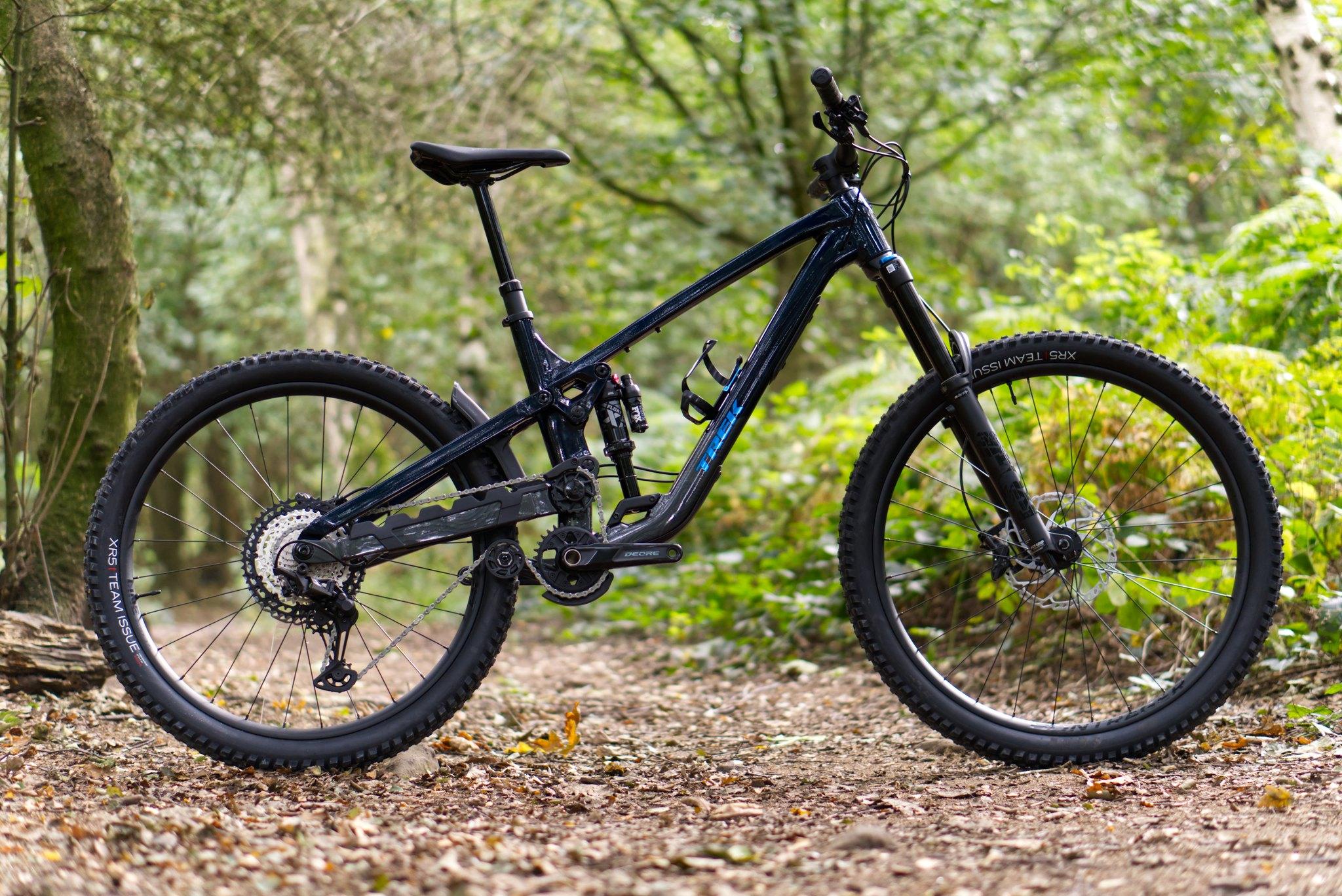
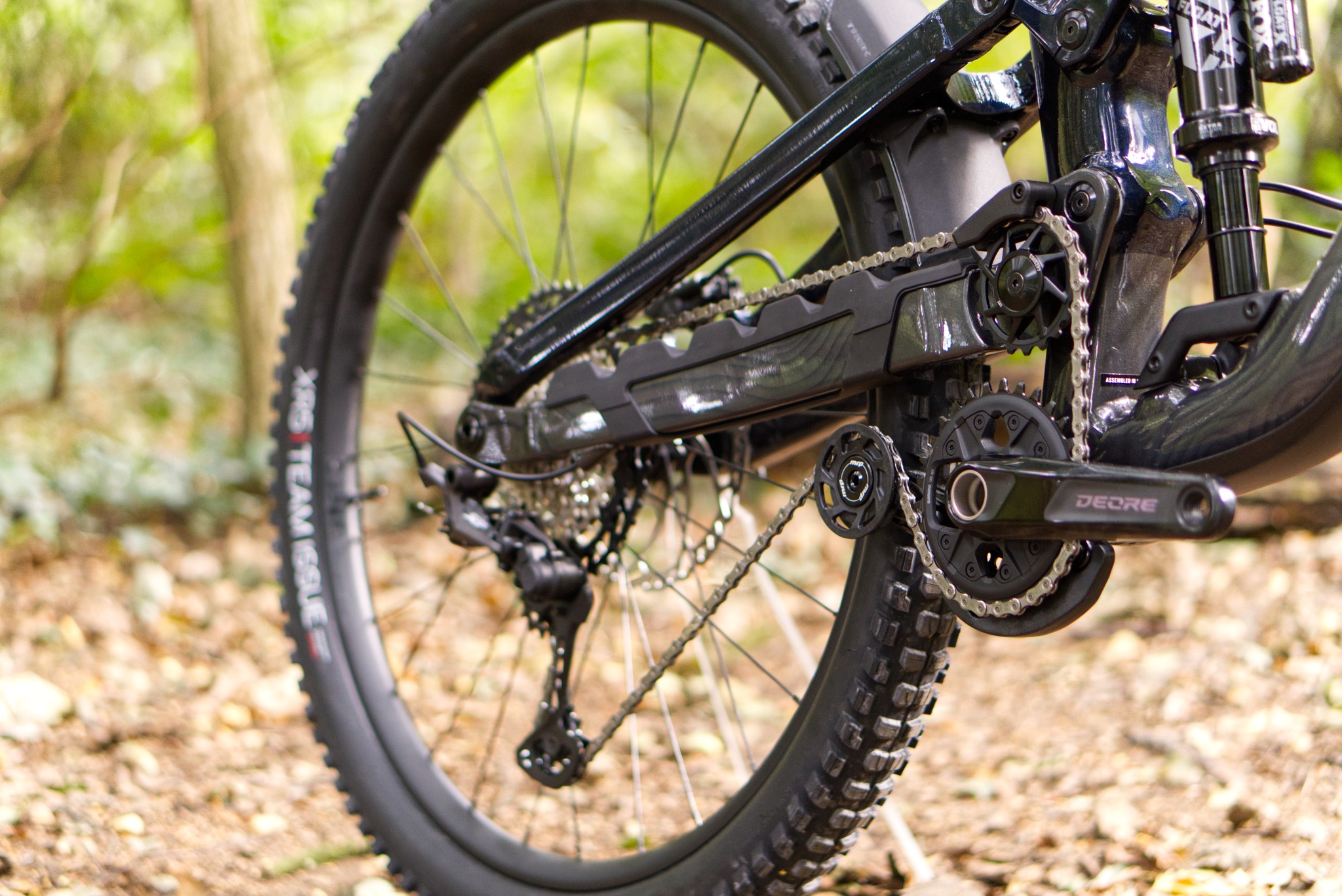
Anyone who’s ridden a long travel full sus bike will know about the issues with bobbing and pedalling efficiency, especially on the way back up the hills. Trek have put a lot of work into making the new Slash efficient on ascents, with much of that down to the idler pulleys, and the initial reaction from testers in MTB media is backing up their claims.
Trek have launched the new range with seven models, starting with the Slash 8 (pictured) at £4,250 and running to the 9.9 XX AXS, which includes SRAM’s new T-Type transmission, at £11,750. We’re pleased to say we have stock in place so come and visit us in store on Calder Vale Road, Wakefield.